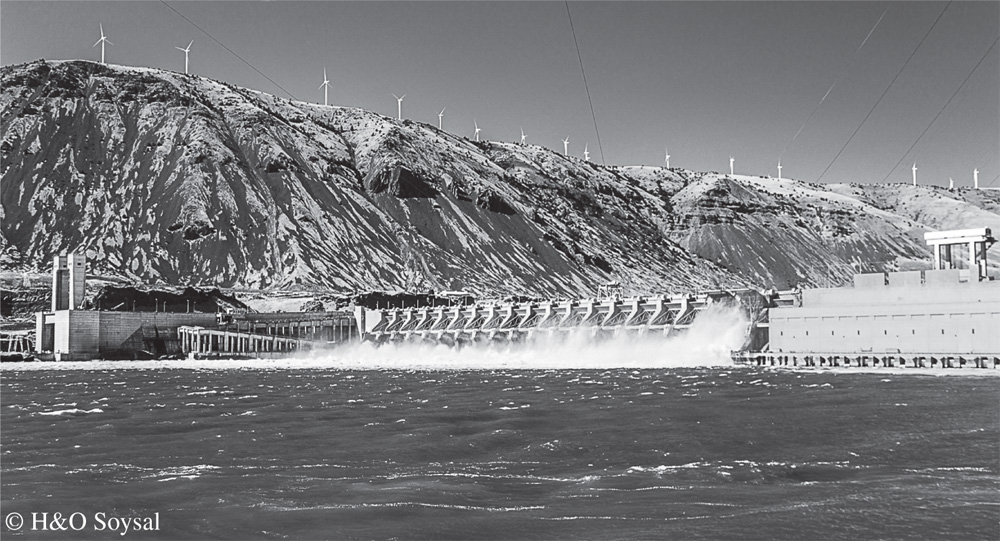5Renewable Energy Sources

The Dalles Hydroelectric Power Plant on the Columbia River, between Washington and Oregon in the US. The Dalles plant has 2160‐MW nameplate capacity and 2058‐MW summer capacity. It has a lock to move cargo vessels, and fish ladders to allow various species of fish to migrate up‐ and downstream. Overhead wires above the river protect migrating fish from avian predators.
The Mountain Ridge Wind Farm in the background has 50‐MW nameplate capacity. The facility operated by the Los Angeles Department of Water and Power consists of 25 wind turbines of 2‐MW rated power each. Wind turbines are installed on 125‐m towers.
5.1 Introduction
Renewable energy sources were sufficient for all human functions in early civilizations. Sunlight, human power, animal work, blowing wind, and flowing water satisfied all energy needs for lighting, heating, hunting, agriculture, production, and transportation, as well as creating marvelous art, cities, and landmarks.
Humanity has, however, always challenged nature. As societies evolved, the need for energy has continuously increased to produce artificial light and heat when sunlight was insufficient or unavailable, produce more goods with less labor, and reach farther places in a shorter time. The industrial revolution in the mid‐nineteenth century answered the quest of humanity for more power. Since then, fossil fuels have ...